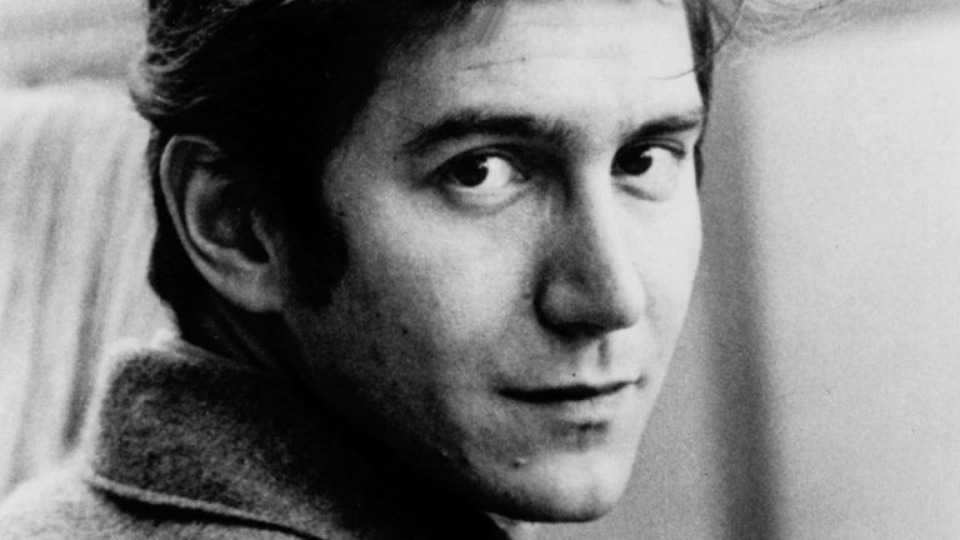
For those not fortunate enough to recall, Phil Ochs was one of our nation’s most profound singer/songwriters in the period that bridged the Civil Rights, antiwar, and feminist movements. He was born on December 19, 1940: This week, he would have been 80 years old.
His topical songs called for peace and an equitable society. They called for equal rights and celebrated an egalitarian philosophy. His songs damned the establishment that accepted the murder of leaders such as Medgar Evers and allowed organized labor to abandon its true cause.
Ochs’s songs unashamedly pointed out our faults and tried to demonstrate the means to repair them. They were brash appeals to youthful protesters. Ochs was a presence—in song and in person—at historic events such as the 1968 Chicago Democratic Convention, where he was arrested, and which in his own words turned him into an “early revolutionary.” His music was heard at campuses and rallies as commonly as those of his contemporaries, Bob Dylan and Joan Baez.
Many of Ochs’s songs remain in the common vocabulary and repertoire of today’s folk singers. Yet this vital, powerful, gifted songwriter of sonorous voice and darkly handsome features is now but a fading image to the general society.
Ochs’s major musical influences included Woody Guthrie, Pete Seeger, Buddy Holly, Elvis Presley, Bob Gibson, and Merle Haggard. His best-known songs include “I Ain’t Marching Anymore,” “Changes,” “Draft Dodger Rag,” “Love Me, I’m a Liberal,” “Outside of a Small Circle of Friends,” “Power and the Glory,” “There but for Fortune,” “The War Is Over,” and “When I’m Gone.” His song “Crucifixion” compared the deaths of Jesus Christ and assassinated President John F. Kennedy.
From the New York Greenwich Village folk scene to the national stage, Ochs sang his protests. Albums such as All the News That’s Fit to Sing and I Ain’t Marching Anymore spoke volumes. Though the songs kept coming, he seemed unmarketable. Somehow the corporate media kept missing—or trying to dismantle—the point. Ochs’s move to California allowed him more breathing space but little solace. He signaled his progressing mental depression by titling a 1969 album Rehearsals for Retirement, a reaction to the events of 1968—the assassinations of Martin Luther King, Jr. and Robert F. Kennedy, the police riot in Chicago, and the election of Richard Nixon. The cover pictured his own gravestone: BORN: EL PASO, TEXAS, 1940, DIED: CHICAGO, ILLINOIS, 1968. In all, he produced eight albums during his lifetime.
Continually plagued by demons, inner and outer, Ochs’s performances often became arguments with the audience, best documented by the concert album, Gunfight at Carnegie Hall, in which he can be heard berating a taunting audience with statements like, “Don’t be like Spiro Agnew.” By then he had turned to his musical roots in country music and early rock and roll, deciding on a persona “part Elvis Presley and part Che Guevara,” and performed in a commissioned gold lamé suit.
Through all of the much documented pain, Ochs maintained contact with the issues that mattered most. For a while at least, he fought back against the power elite’s offensive. Into the early 1970s, he organized large-scale benefit concerts that would serve as the model for the later No Nukes and Live Aid events. He traveled to South America in August 1971 and met with Chilean songwriter-activist Victor Jara, whose horrific murder in 1973 at the behest of the right-wing dictator Pinochet was a crushing blow to the already faltering Ochs. By the mid-1970s, unable to prevail in the battle on every front and by then diagnosed with bipolar disorder, he would die on April 9, 1976, by his own hand. A memorial by Forward writer J.J. Goldberg contains a number of clips of Ochs singing his greatest songs here.
Phil Ochs dared to speak back to the criminal Nixon administration through his music, uncovering and exposing it with anger and wry humor. In his “Here’s to the State of Richard Nixon,” his line “the speeches of the President are the ravings of a clown” alerted his audience to police brutality and corruption and the manipulation of “the American dream.” Wisely, he warned us that a protest song was “something you won’t hear on the radio.”
More than 40 years after his death, Ochs’s songs remain relevant. There are mailing lists and online discussion groups dedicated to Ochs and his music; websites that have music samples, photographs, and other links; and articles and books continue to be written and published about him. In September 2014, Meegan Ochs announced that she was donating her father’s archives to the Woody Guthrie Center in Tulsa, Oklahoma, including many of his notebooks, journals, videotapes of his performances, the gold lamé suit, photographs, and other documents and memorabilia.
Ochs’s catalog of songs continues to provide material for numerous later cover artists. He is also the subject of “I Dreamed I Saw Phil Ochs Last Night,” by Billy Bragg, from his 1990 album The Internationale, which was based on the Alfred Hayes/Earl Robinson song “Joe Hill” which Ochs helped popularize. Ochs also had his own, different song (“Joe Hill”) about the early 20th-century union activist/songwriter.
Michael Korolenko directed the 1984 biopic Chords of Fame, which featured Bill Burnett as Ochs. The film included interviews with people who had known Ochs, including Yippies Abbie Hoffman and Jerry Rubin, manager Harold Leventhal, and Mike Porco, the owner of Gerde’s Folk City. Filmmaker Ken Bowser directed the 2010 documentary film Phil Ochs: There But for Fortune, which premiered in 2010.
A member of the American Federation of Television and Radio Artists (AFL-CIO), Phil Ochs dared us to care, at the expense of himself. But we will never forget. The outrageous times we live in call for a revival of his fearless spirit.
Adapted from earlier appreciations of Phil Ochs, published in PW on Dec. 12, 2003, and Dec. 19, 2016.










